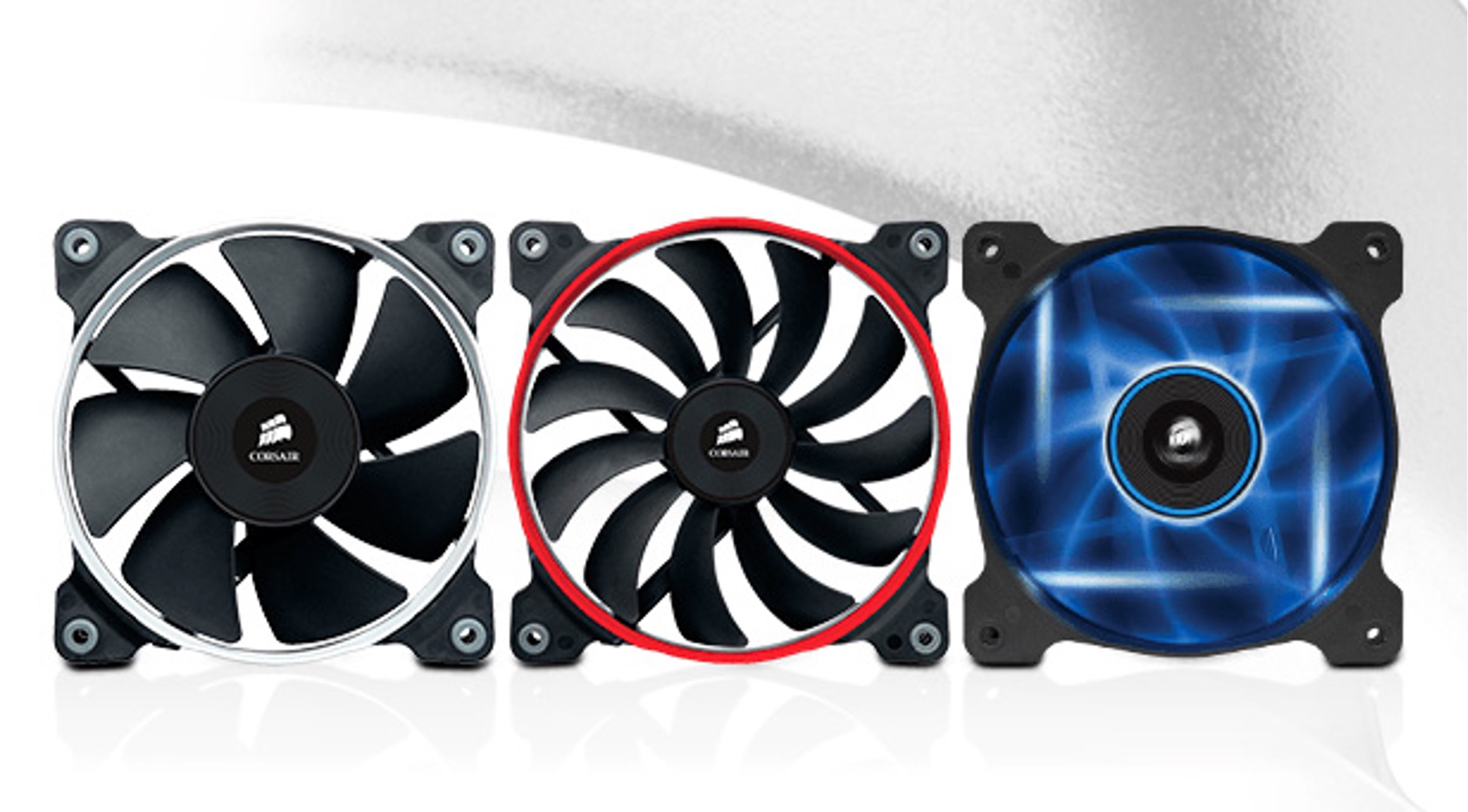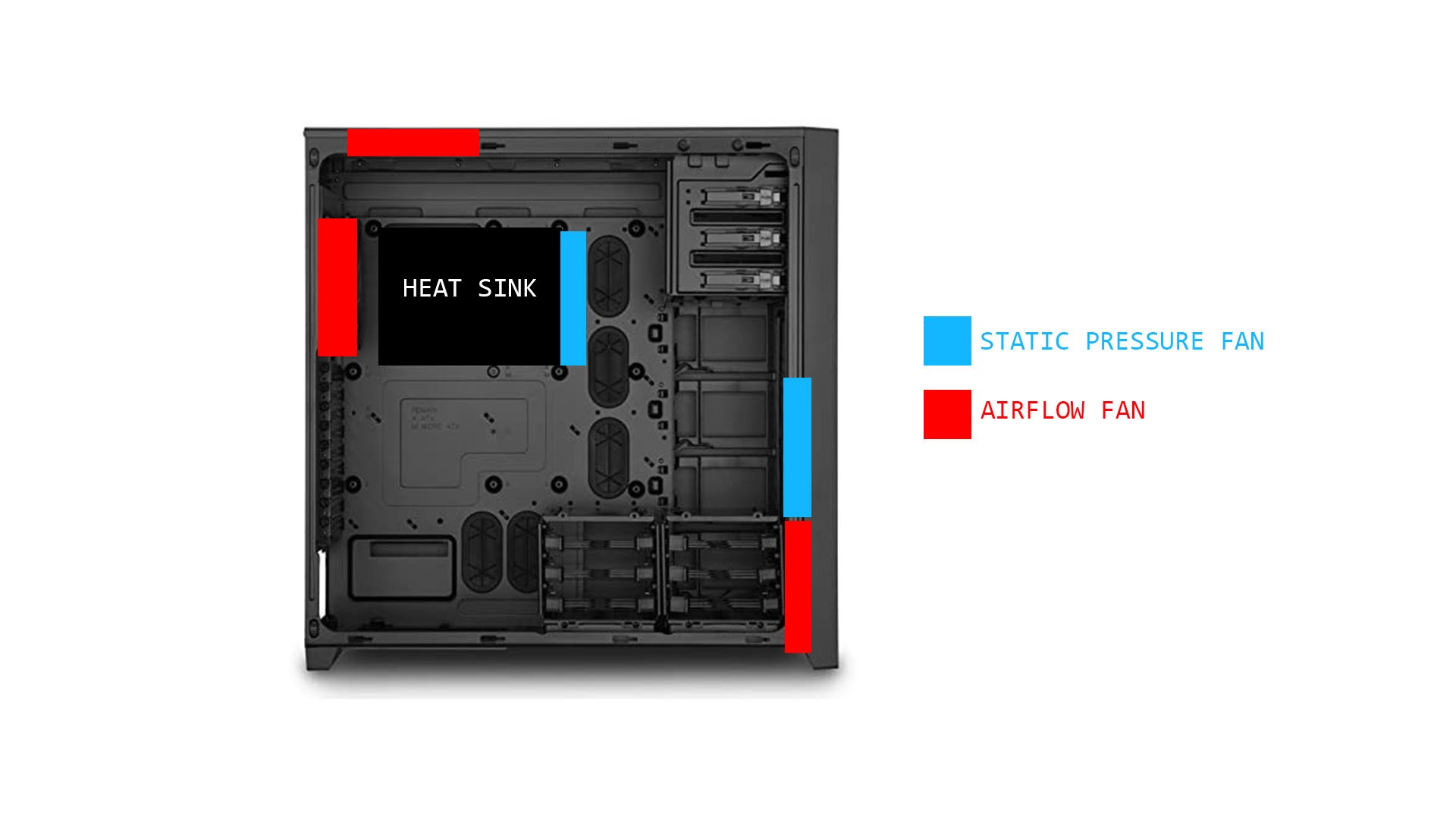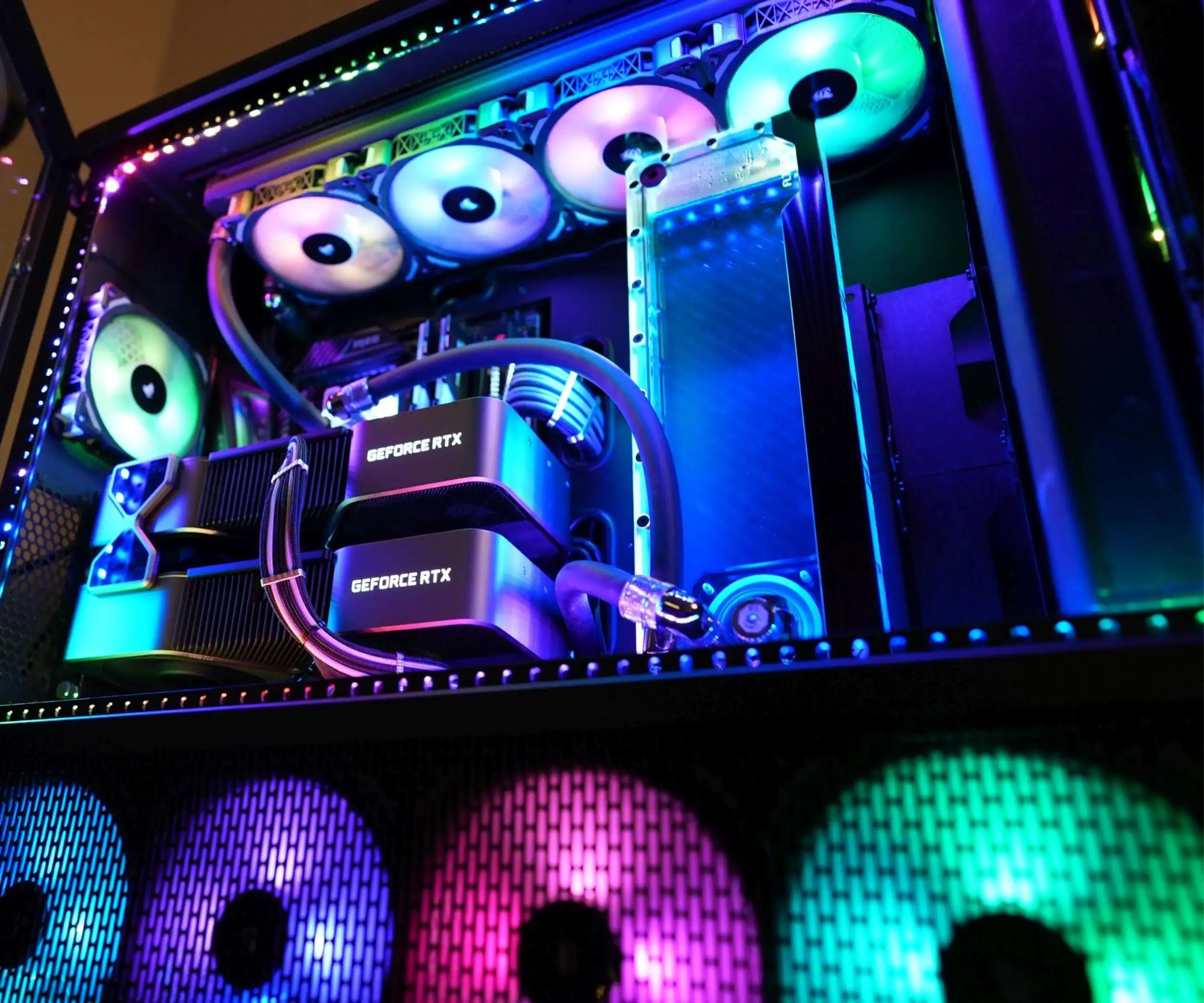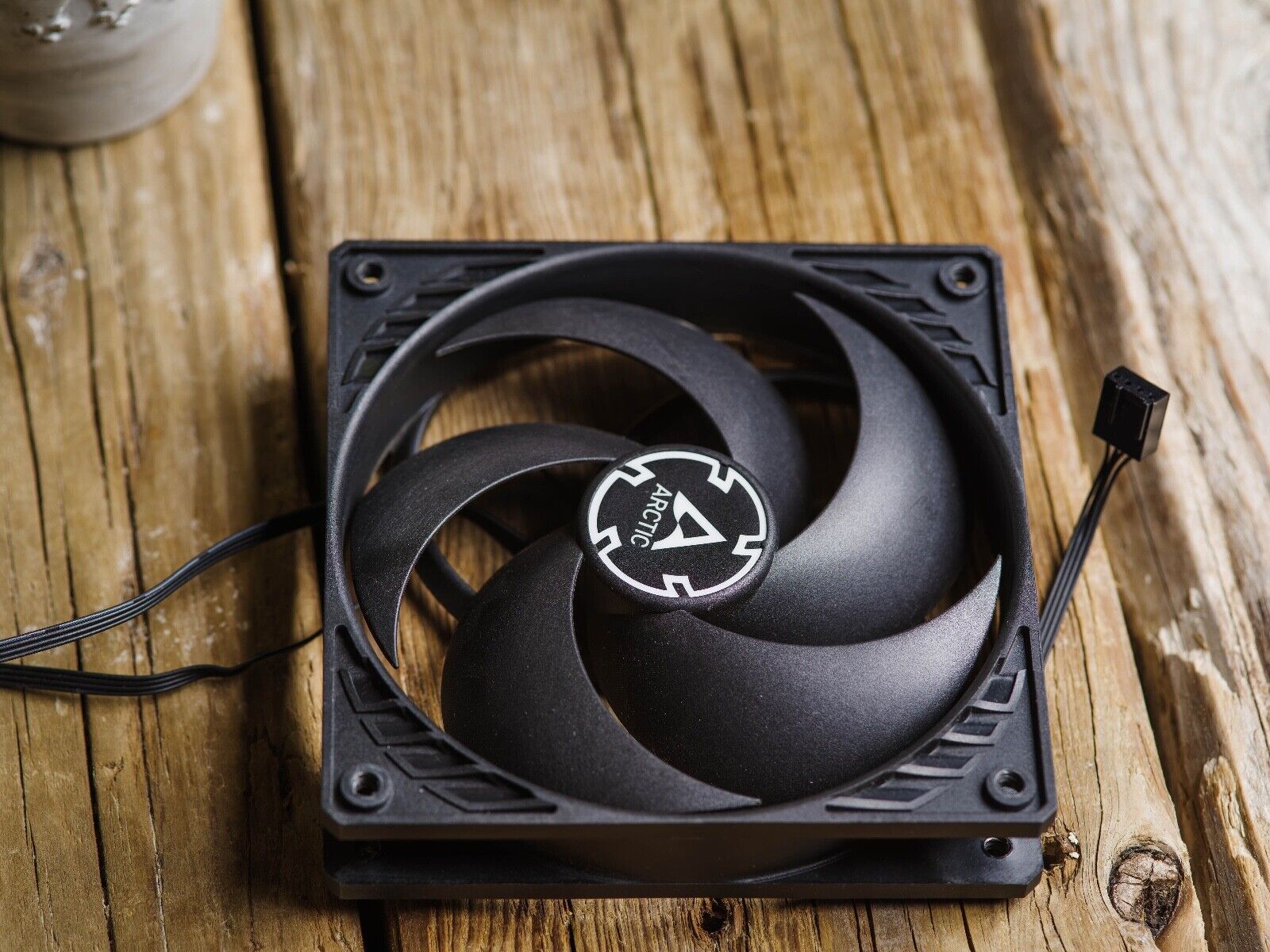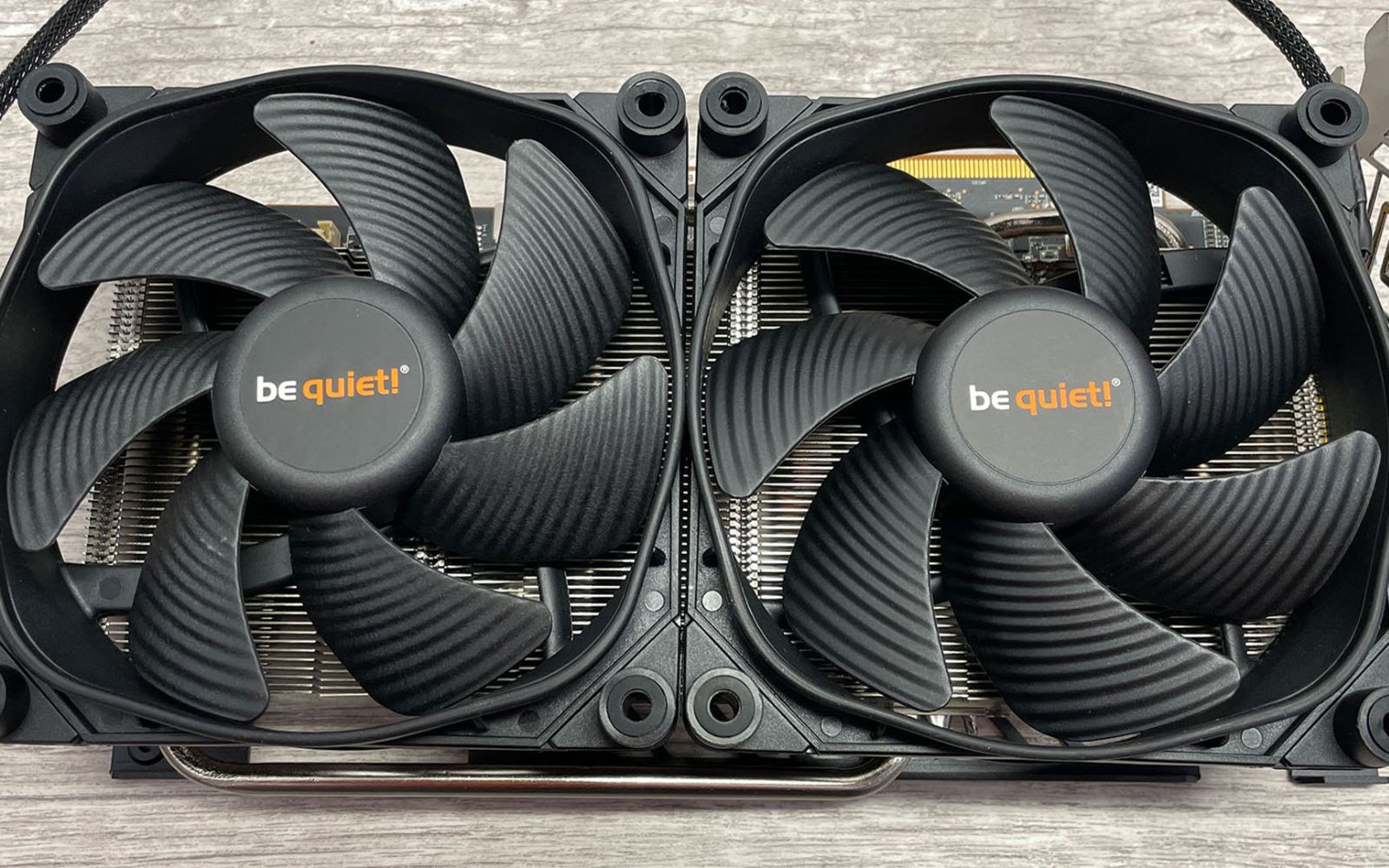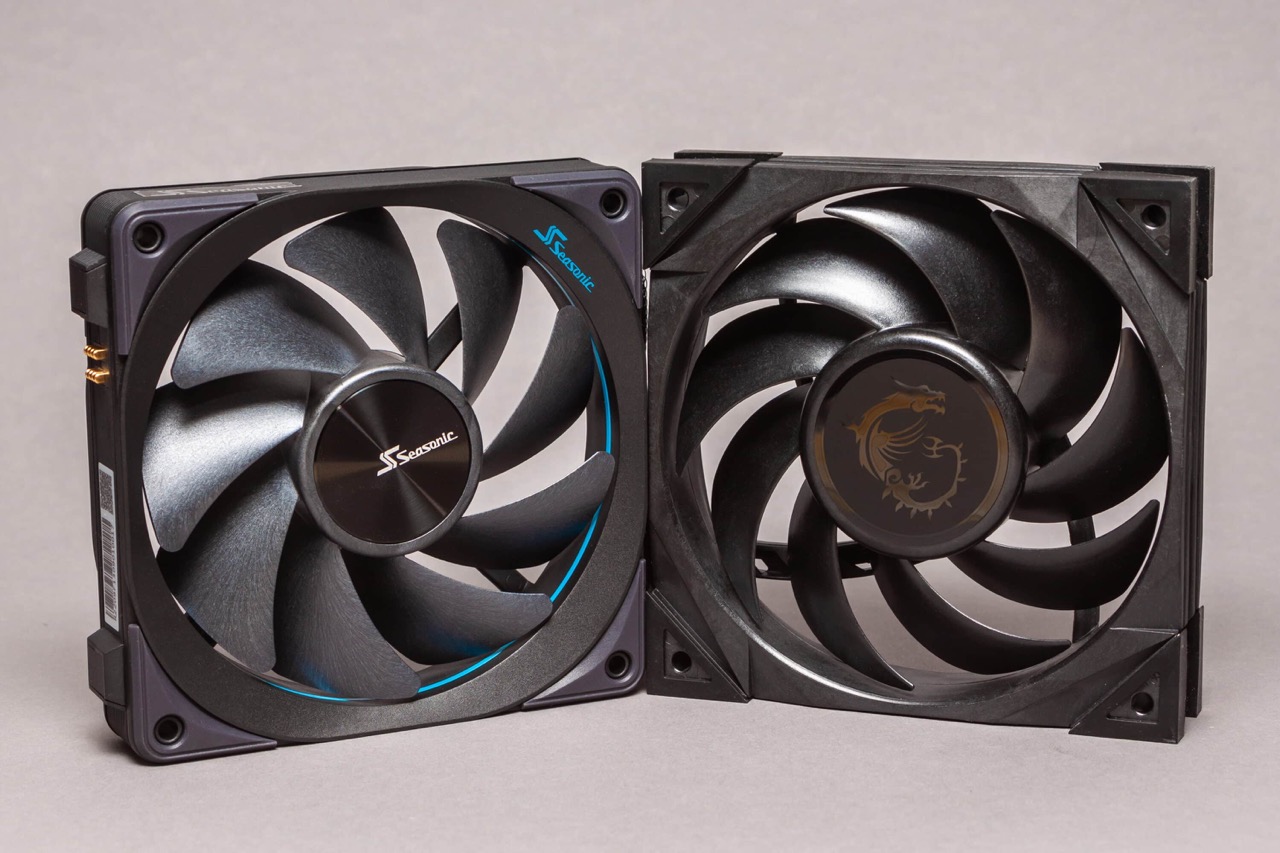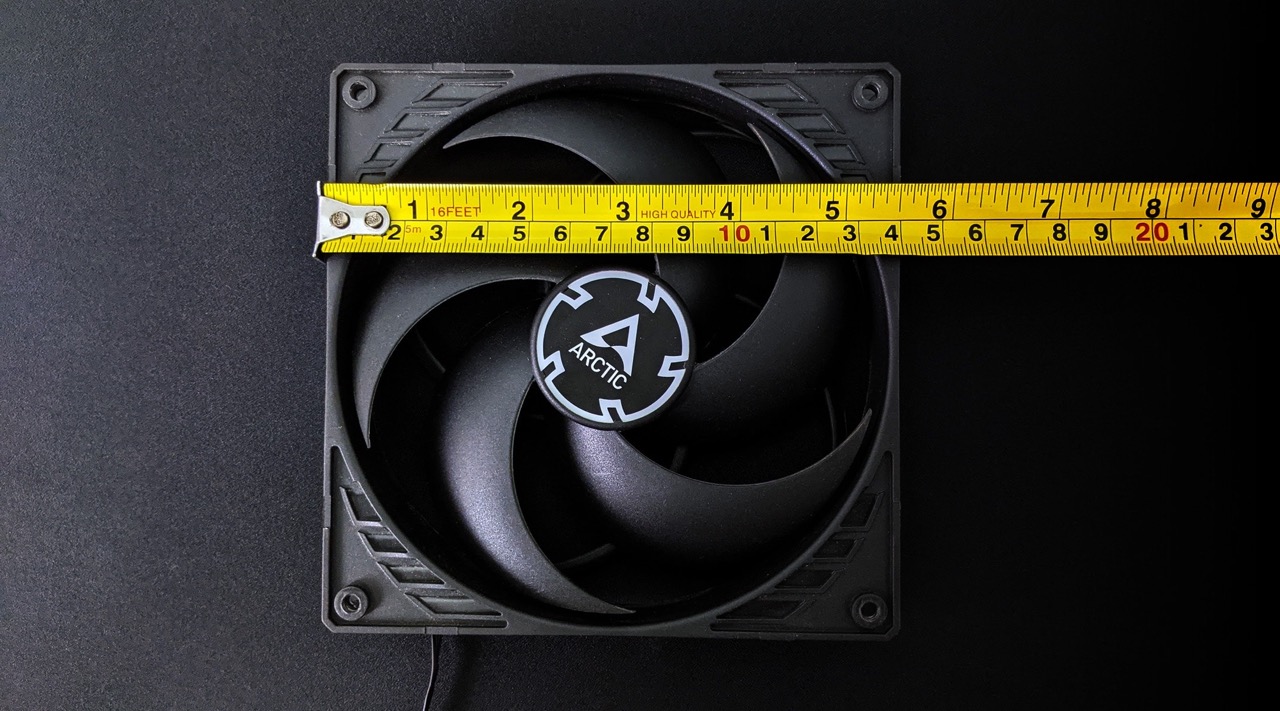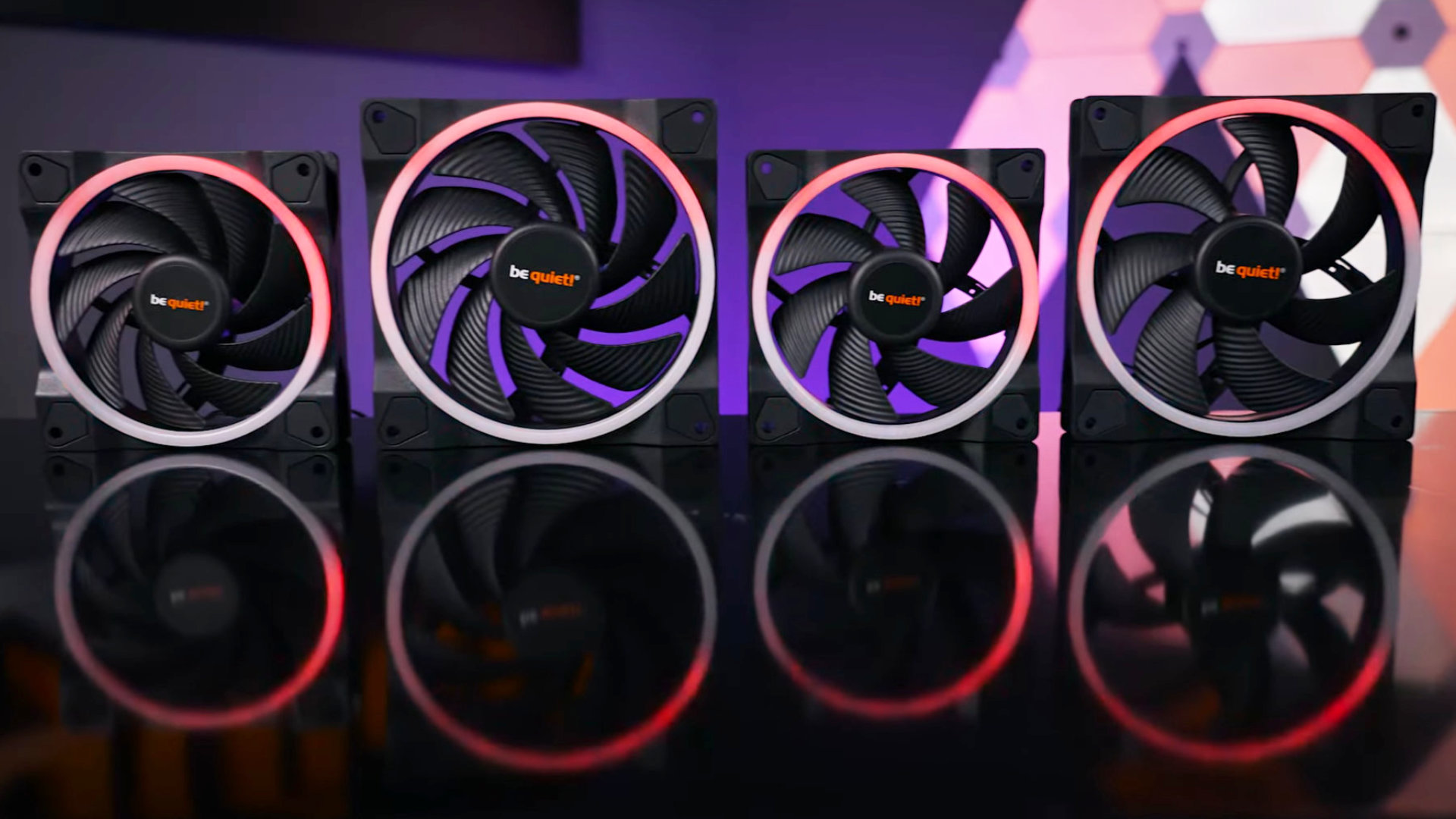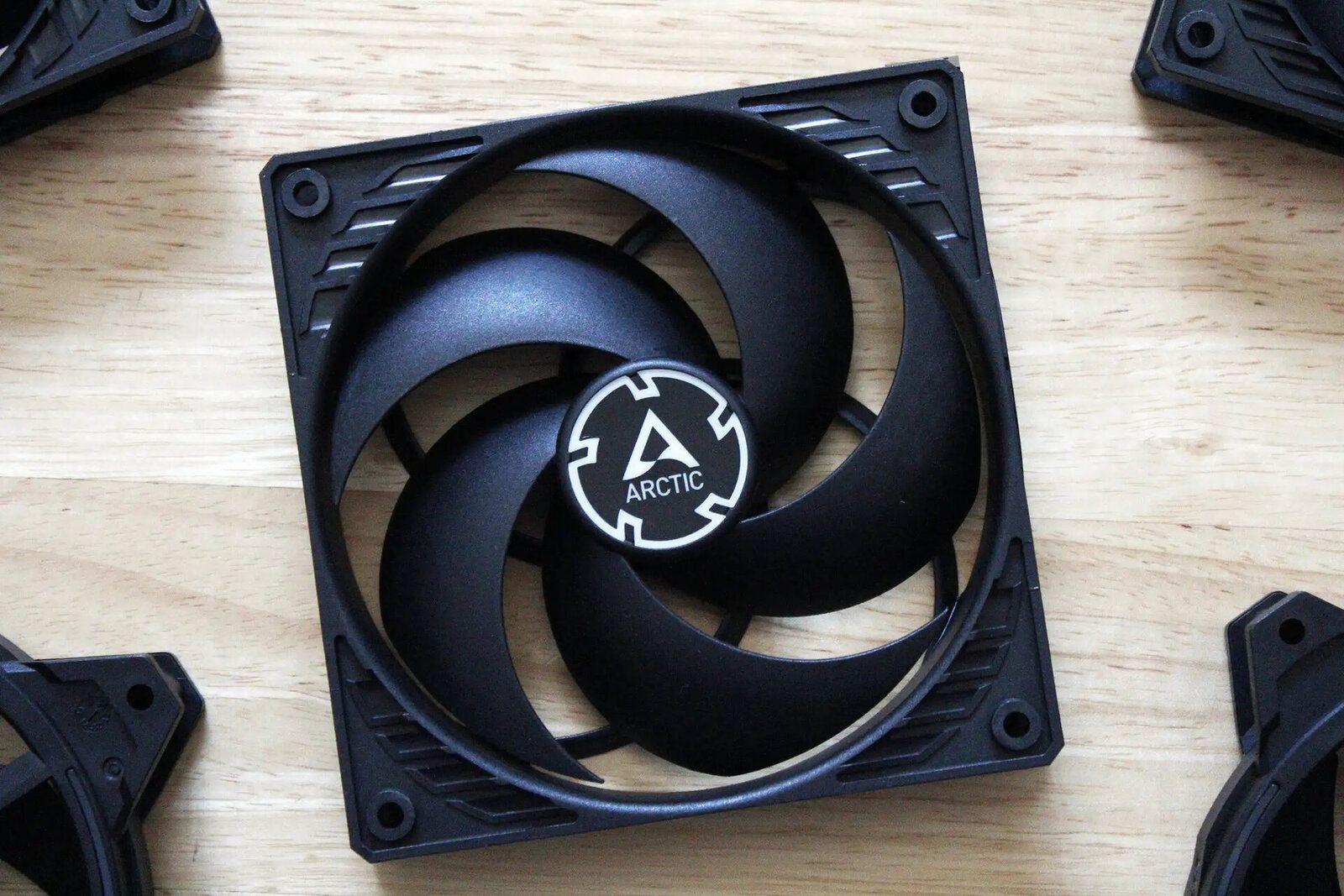Introduction
Welcome to the world of PC case fans and their ever-important speed settings. When it comes to keeping your computer running smoothly and maintaining optimal performance, the speed at which your case fans operate plays a crucial role. In this article, we will delve into the ins and outs of PC case fan speed, its significance, and how to effectively manage it.
PC case fans are an essential component in every desktop computer, responsible for keeping the internal components cool and preventing overheating. They accomplish this by constantly circulating air within the case, dissipating heat generated by the CPU, GPU, and other components. The fan speed determines how fast the blades rotate, directly affecting the amount of air that is circulated.
Understanding the importance of PC case fan speed is vital for several reasons. Firstly, proper airflow is essential for preventing heat buildup, which can lead to hardware damage and decreased performance. By controlling and optimizing fan speed, you can ensure that the internal temperature remains within safe limits, extending the lifespan of your components.
Another reason why PC case fan speed is significant is noise reduction. Fans running at higher speeds generally produce more noise, which can be distracting and annoying, especially in quiet environments. By finding the right balance between cooling efficiency and noise levels, you can create a more pleasant and peaceful computing experience.
When determining the appropriate fan speed for your PC case, several factors come into play. Factors such as the computer’s usage (e.g., gaming, video editing, or general usage), the ambient temperature of the room, and the specific hardware configuration can all influence the ideal fan speed settings.
Monitoring your PC case fan speed is a vital step in ensuring optimal performance. By actively monitoring the fan speed, you can identify any potential issues such as a failing fan or inadequate cooling. Several software applications and BIOS settings allow you to monitor and adjust individual fan speeds, giving you greater control over your system’s cooling capabilities.
There are different approaches to controlling PC case fan speed, including using hardware controllers, software utilities, or the motherboard’s built-in fan control system. Each method has its advantages and limitations, and choosing the right approach depends on your specific needs and preferences.
Proper cooling is essential for the smooth operation and longevity of your computer. By maintaining an appropriate fan speed, you prevent heat-related problems such as system crashes, thermal throttling, and premature hardware failure. Additionally, efficient cooling can enhance performance by allowing components to operate at their optimal temperatures, reducing the risk of overheating-related performance bottlenecks.
In the following sections, we will explore recommended fan speed settings for different usage scenarios and specific hardware configurations. By implementing these guidelines, you can achieve the right balance between performance, cooling efficiency, and noise reduction for your PC case fans.
What is PC Case Fan Speed?
PC case fan speed refers to the rate at which the blades of the fan rotate, determining the amount of air that is circulated within the computer case. Fan speed is typically measured in revolutions per minute (RPM). Higher fan speeds result in increased airflow, leading to more efficient cooling, but also typically generate more noise.
Controlling the fan speed is crucial for maintaining the temperature of your computer’s internal components. By adjusting the fan speed, you can effectively manage the airflow to ensure that adequate cooling is provided to the CPU, GPU, and other critical parts. This helps to prevent overheating, which can cause performance issues or even damage to your hardware.
The fan speed can have a significant impact on the noise level of your computer. Fans running at higher speeds produce more noise, which can be bothersome if you prefer a quieter computing environment. Some fans come with built-in noise reduction features, such as rubber dampeners or special blade designs, to minimize noise even at high speeds.
Most modern computer cases have multiple fan mounting locations, allowing you to install additional fans to improve cooling efficiency. Each fan can be individually controlled to achieve the desired balance between cooling performance and noise levels. Adjusting the fan speed can be done through various methods, such as using hardware controls, software utilities, or the motherboard’s fan control system.
It’s important to note that not all fans in a computer case need to run at the same speed. By adjusting the fan speed of each fan individually, you can prioritize cooling for specific components that generate more heat, such as the CPU or GPU. This targeted cooling approach allows you to optimize cooling efficiency while minimizing noise output.
Some computer cases come with built-in fan speed controllers, allowing you to adjust the fan speed directly on the case itself. These controllers typically provide a few predetermined speed settings or a knob for manual adjustment. Software utilities, on the other hand, enable you to monitor and control fan speed via your operating system, offering more precise and flexible control.
The motherboard’s fan control system is another popular method for managing fan speeds. Many motherboards have built-in features that allow you to adjust fan speed based on temperature sensors or other criteria. These settings can often be accessed through the BIOS or dedicated software provided by the motherboard manufacturer.
In the next section, we will explore the various factors to consider when determining the ideal fan speed for your PC case, ensuring optimal cooling performance without sacrificing noise levels or overall system stability.
Why is PC Case Fan Speed Important?
PC case fan speed plays a crucial role in maintaining the overall health and performance of your computer system. Let’s explore the reasons why it is important to pay attention to and effectively manage the fan speed.
First and foremost, PC case fan speed is directly linked to the cooling efficiency of your computer. As your components generate heat during operation, it is crucial to have adequate airflow to dissipate that heat. By controlling the fan speed, you can ensure that the necessary airflow is maintained, preventing excessive heat buildup that can lead to performance degradation or even component failure.
Without proper cooling, your CPU, GPU, and other sensitive components can become overheated. Overheating can cause a decrease in performance, system instability, and in some cases, irreversible damage. By managing the fan speed effectively, you can keep your components operating within safe temperature ranges, prolonging their lifespan and maintaining optimal performance.
Another reason why PC case fan speed is important is noise reduction. When fans run at higher speeds, they tend to generate more noise. This can be particularly bothersome if you work or game in a quiet environment or if you simply prefer a quieter computing experience. By finding the right balance between cooling performance and noise output, you can create a more pleasant and peaceful environment without compromising on cooling efficiency.
Additionally, managing the fan speed of your PC case can help in reducing energy consumption. Fans running at higher speeds consume more power, which can contribute to higher electricity bills. By optimizing the fan speed and running fans only at necessary speeds, you can reduce the overall power consumption of your system, resulting in energy savings in the long run.
Furthermore, controlling the fan speed allows you to customize the cooling performance based on your specific needs. For instance, if you engage in demanding tasks such as gaming or video editing, you may want to increase the fan speed to ensure maximum cooling for your hardware. On the other hand, during periods of low activity or idle times, you can lower the fan speed to minimize noise and power consumption.
It’s worth mentioning that different computer configurations and use cases may require different fan speeds. For instance, a high-performance gaming rig with overclocked components will likely require more aggressive cooling and higher fan speeds compared to a standard office workstation. Understanding your specific requirements and adjusting the fan speed accordingly can greatly enhance the overall reliability, performance, and longevity of your system.
In the next section, we will explore the key factors to consider when determining the ideal fan speed for your PC case, helping you find the right balance between cooling efficiency, noise reduction, and overall system stability.
Factors to Consider When Determining PC Case Fan Speed
When determining the appropriate fan speed for your PC case, there are several important factors to consider. Each factor plays a role in finding the right balance between cooling performance, noise levels, and system stability. Let’s explore these factors in detail.
1. Hardware Configuration: The specific hardware components in your system can greatly influence the cooling requirements. High-performance processors and graphics cards tend to generate more heat and may require more aggressive cooling and higher fan speeds. On the other hand, if you have lower-powered components or a well-ventilated case, you may be able to operate at lower fan speeds without compromising cooling efficiency.
2. Computer Usage: The type of tasks you perform on your computer also affects the cooling requirements. If you frequently engage in resource-intensive activities like gaming, 3D rendering, or video editing, your components will generate more heat and require higher fan speeds. However, for general web browsing, document editing, or lightweight applications, you may be able to operate at lower fan speeds to keep noise levels down.
3. Ambient Temperature: The temperature of the room where your computer is located can impact the cooling performance. Higher room temperatures will reduce the overall cooling efficiency, requiring higher fan speeds to compensate. Conversely, if your room is consistently cool, you may be able to operate fans at lower speeds without sacrificing cooling effectiveness.
4. Case Airflow: Proper airflow within the computer case is essential for effective cooling. If your case has good airflow design with strategically placed intake and exhaust fans, you may be able to achieve adequate cooling at lower fan speeds. However, if your case has limited airflow or poor cable management obstructing the airflow, you may need to increase fan speeds to compensate.
5. Fan Placement: The placement and quantity of fans in your PC case also impact the cooling performance. The more fans you have, the better the overall airflow will be. Placing intake fans at the front and bottom of the case and exhaust fans at the top and rear will create a more efficient airflow path. Adjusting the fan speeds of individual fans based on their placement and function can further optimize cooling efficiency.
6. CPU and GPU Temps: Monitoring the temperature of your CPU and GPU can give you valuable insights into the cooling requirements. Utilize software utilities or BIOS settings to monitor these temperatures under different workloads. If you notice consistently high temperatures, it may be necessary to increase fan speeds to maintain safe operating temperatures.
7. Noise Tolerance: The level of noise you are willing to tolerate is a personal preference. If you require a quiet computing environment, you may prioritize lower fan speeds and invest in fans with noise reduction features. However, if noise is not a concern or if you wear headphones while using your computer, you may opt for higher fan speeds to maximize cooling performance.
By considering these factors, you can determine the ideal fan speed settings for your PC case. Striking the right balance between cooling performance, noise levels, and system stability will ensure that your components are adequately cooled, extending their lifespan and ensuring optimal performance.
How to Monitor PC Case Fan Speed
Monitoring your PC case fan speed is essential for ensuring optimal cooling performance and maintaining the health of your computer. By actively monitoring the fan speed, you can identify any potential issues, such as a failing fan or inadequate cooling. Here are some methods to effectively monitor the fan speed of your PC case.
1. BIOS Settings: Many motherboards provide options to monitor and control fan speeds directly from the BIOS. Accessing the BIOS settings during the computer’s boot sequence allows you to view the current fan speeds and adjust the settings as needed. Look for terms like “Hardware Monitor” or “Fan Control” in your BIOS menu to access these options.
2. Manufacturer Software: Some computer component manufacturers provide dedicated software utilities that allow you to monitor and control fan speeds. For example, AMD offers “AMD OverDrive,” which enables monitoring and adjustment of fan speeds for AMD processors. Check the manufacturer’s website for any specific software tools designed for monitoring and controlling fan speeds.
3. Motherboard Software: Many motherboards come with their own software utilities that allow you to monitor fan speeds and adjust settings. These utilities provide real-time data on fan speeds, temperature readings, and system voltages. Refer to your motherboard’s manual or visit the manufacturer’s website to download and install the appropriate software for your specific motherboard model.
4. Third-Party Software: There are numerous free and paid software applications available that can monitor fan speeds and other system metrics. Popular choices include HWMonitor, SpeedFan, and Open Hardware Monitor. These software programs provide real-time monitoring of fan speeds, temperature readings, and other relevant data. Some software even allows you to create custom fan speed profiles for different scenarios.
5. Fan Controller Hardware: In addition to software monitoring options, you can also invest in dedicated fan controller hardware. Fan controllers are physical devices that connect to your computer’s fan headers and provide additional control and monitoring functionalities. These controllers typically display fan speeds and allow manual adjustment of fan speeds through knobs or buttons.
When monitoring fan speeds, it’s important to keep in mind that the reported values may differ from the actual RPM due to various factors, such as sensor inaccuracies or software limitations. It’s a good practice to compare the reported speeds with the expected airflow and noise levels to ensure that the fans are operating as intended.
Regularly monitoring your PC case fan speed will help you identify any abnormalities or issues with your cooling system. It can also provide valuable information for troubleshooting potential cooling problems or optimizing fan speed settings for better performance and noise reduction.
Now that we’ve explored the methods for monitoring fan speeds, let’s move on to discussing different approaches for controlling PC case fan speed in the next section.
Different Approaches to Controlling PC Case Fan Speed
Controlling the fan speed of your PC case is essential for maintaining optimal cooling performance and managing noise levels. There are several approaches you can take to effectively control the fan speed and strike the right balance between cooling efficiency and noise reduction.
1. Hardware Fan Controllers: Hardware fan controllers are physical devices that connect to your computer’s fan headers and allow manual adjustment of fan speeds. These controllers typically feature knobs or buttons that make it easy to increase or decrease fan speeds. Some advanced fan controllers even offer additional features like temperature-based fan speed control, allowing you to set customized profiles for different temperature ranges.
2. Software Fan Control Utilities: Many motherboard manufacturers provide dedicated software utilities that allow you to control fan speeds through your operating system. These software programs provide a user-friendly interface where you can adjust fan speed settings, create custom fan profiles, and monitor real-time fan speeds and temperature readings. This approach provides more flexibility and precise control over fan speed compared to hardware controllers.
3. Motherboard BIOS Settings: Most motherboards come with built-in fan control options accessible through the BIOS settings. These settings allow you to adjust fan speeds based on temperature readings from onboard sensors. You can often select different fan speed curves or set specific fan speed percentages based on predefined temperature thresholds. While BIOS settings may not offer the same level of customization as software utilities, they provide a convenient way to control fan speeds without the need for additional software.
4. Fan Speed Control Through PWM: Pulse Width Modulation (PWM) is a method of controlling fan speed by varying the amount of power supplied to the fan. PWM fans have four pins instead of the traditional three pins that standard fans use. They allow for more precise control and smoother fan speed adjustments. Most modern motherboards support PWM fans and include headers specifically designed for PWM control.
5. Smart Fan Technology: Some computer cases and motherboard manufacturers provide smart fan technology, which automatically adjusts fan speeds based on temperature readings. These systems use built-in temperature sensors and advanced algorithms to adjust fan speeds in real-time, providing optimal cooling while minimizing noise output. Smart fan technology is a convenient option for users who prefer a hands-off approach to fan control.
When choosing an approach to control fan speed, consider your specific needs, preferences, and the capabilities of your hardware. Factors such as the number and type of fans, motherboard support, and the level of control required will influence the best approach for your system.
It’s important to note that excessive fan speed reduction may lead to inadequate cooling, resulting in higher component temperatures. Conversely, running fans at maximum speed all the time can contribute to increased noise levels. It’s crucial to find the right balance based on your cooling requirements, ambient noise tolerance, and hardware configuration.
Continued monitoring and adjustment of fan speeds will help optimize your PC’s cooling performance, improve component longevity, and create a more enjoyable computing experience.
In the next section, we will emphasize the importance of proper cooling for your computer system and discuss the potential consequences of inadequate cooling.
The Importance of Proper Cooling
Proper cooling is of utmost importance when it comes to maintaining the health and performance of your computer system. By ensuring that components stay within safe operating temperatures, you can prevent issues and enjoy a stable and durable system. Let’s explore the significance of proper cooling in more detail.
1. Preventing Overheating: Effective cooling prevents overheating, which can cause serious damage to your computer. Overheating can lead to system instability, unexpected shutdowns, and even permanent hardware failure. In extreme cases, excessive heat can warp or melt components, rendering your computer inoperable. Proper cooling helps to dissipate heat away from critical components such as the CPU and GPU, keeping them within safe temperature ranges.
2. Maintaining Performance: Excessive heat negatively impacts the performance of computer components. When temperatures rise, processors and graphics cards may throttle their performance to reduce heat output. This can result in decreased performance and slower response times. By keeping temperatures in check through proper cooling, you can ensure that your components operate at their full potential, maximizing performance and productivity.
3. Extending Lifespan: Excessive heat can significantly reduce the lifespan of computer components. Heat weakens the overall structure and accelerates the aging process of electronic components. Over time, prolonged exposure to high temperatures can cause components to fail prematurely. By implementing effective cooling strategies, you can extend the lifespan of your components, reducing the need for frequent replacements and saving you money in the long run.
4. Preventing Data Loss: Extreme heat not only affects hardware but can also lead to data loss. In the event of a component failure caused by overheating, important data stored on the affected component, such as hard drives or SSDs, may become inaccessible or corrupted. By maintaining proper cooling, you minimize the risk of data loss and protect valuable information stored on your computer.
5. Ensuring Stability: A well-cooled system is more likely to be stable and reliable. Heat-related issues, such as thermal throttling and system crashes, can be frustrating and disruptive to your work or gaming sessions. Proper cooling helps to maintain stable and consistent operating temperatures, ensuring the smooth operation of your system and minimizing interruptions.
6. Reducing Fan Noise: While cooling is crucial, excessive fan noise can be a nuisance. By implementing effective cooling solutions, you can strike a balance between cooling efficiency and noise levels. Investing in high-quality, quiet fans, optimizing fan placements, and adjusting fan speeds appropriately can help create a more pleasant and peaceful computing environment.
Overall, proper cooling is vital for the longevity, performance, and reliability of your computer system. By actively managing temperatures and implementing effective cooling solutions, you can prevent overheating, maintain optimal performance, and extend the lifespan of your components. Whether you use air cooling or liquid cooling methods, finding the right balance for your specific system configuration and usage scenarios is key.
In the next section, we will provide recommendations for ideal PC case fan speed settings based on different usage scenarios to help you achieve effective cooling without compromising noise levels or system stability.
Ideal PC Case Fan Speed Recommendations
Determining the ideal fan speed for your PC case involves finding the right balance between cooling performance, noise levels, and system stability. While specific recommendations vary depending on your hardware configuration and usage scenarios, here are some general guidelines to consider:
1. General Use and Office Work: For everyday tasks like web browsing, document editing, and email, you can typically operate your case fans at lower speeds. Aim for a fan speed that provides adequate cooling without generating excessive noise. This balance will vary based on your specific hardware, ambient room temperature, and personal preference for noise levels.
2. Gaming and High-Performance Tasks: When engaging in resource-intensive activities like gaming or video editing, it’s crucial to ensure optimal cooling for your system. Increasing fan speeds during these tasks can help dissipate heat more effectively, keeping your components within safe temperature ranges. Strike a balance between cooling performance and noise levels by using performance-oriented fan profiles or adjusting fan speeds manually when needed.
3. Overclocked Systems: If you have overclocked your CPU or GPU to achieve higher performance, increased cooling is essential. Overclocking generates additional heat, requiring improved cooling capacity. Consider running case fans at higher speeds to provide the necessary airflow and maintain lower temperatures. However, be prepared for slightly increased noise levels due to the higher fan speeds.
4. Compact or Restrictive Cases: Compact cases or those with limited airflow require special attention to cooling. Since these cases often have a smaller form factor and restricted ventilation, it’s crucial to maximize cooling efficiency. Consider using high-performance fans and adjusting their speeds accordingly to provide sufficient airflow and prevent heat buildup. Additionally, maintaining proper cable management to ensure unobstructed airflow becomes even more important in compact cases.
5. Custom Fan Profiles: Some motherboard and software utilities allow you to create custom fan profiles tailored to your specific needs. This feature enables you to configure fan speeds based on specific temperature thresholds. By customizing fan profiles, you can optimize cooling performance based on your hardware configuration, environmental conditions, and noise tolerance levels.
Remember to regularly monitor temperatures using a software utility or your motherboard’s monitoring system. If temperatures consistently exceed safe limits, consider adjusting fan speeds or improving airflow within the case. Additionally, it’s a good practice to clean dust and debris from fans and heat sinks periodically, as accumulated dust can obstruct airflow and impact cooling effectiveness.
Ultimately, ideal fan speeds depend on your individual system requirements and preferences. It’s essential to find the right balance between cooling performance and noise levels that suits your needs. Experiment with different fan speed settings while monitoring temperatures and noise levels to achieve the optimal cooling solution for your PC case.
In the next section, we will conclude our discussion on PC case fan speed and its importance in maintaining a well-cooled and high-performing computer system.
Conclusion
Properly managing the fan speed of your PC case is essential for maintaining optimal cooling performance, prolonging the lifespan of your components, and ensuring a stable and reliable computer system. By understanding the significance of PC case fan speed, considering factors such as hardware configuration, computer usage, ambient temperature, and case airflow, you can make informed decisions to achieve the right balance between cooling efficiency and noise reduction.
Monitoring fan speeds through BIOS settings, manufacturer software, motherboard software, third-party software, or dedicated fan controller hardware allows you to stay informed about your system’s cooling performance and make necessary adjustments when needed. Through approaches like hardware fan controllers, software fan control utilities, PWM fan control, or smart fan technology, you can control fan speeds based on your specific requirements and preferences.
Proper cooling is crucial for preventing overheating, maintaining performance, extending the lifespan of components, preventing data loss, ensuring stability, and reducing fan noise. By actively managing temperatures and implementing effective cooling solutions, you can create a more efficient and enjoyable computing experience.
Although ideal PC case fan speed recommendations vary depending on factors such as usage scenarios, hardware configuration, and case design, general guidelines can provide a starting point. From everyday office work to demanding tasks like gaming or overclocking, finding the right balance by adjusting fan speeds, creating custom fan profiles, or utilizing performance-oriented fan settings can help you achieve the optimal cooling solution for your PC case.
Remember to regularly monitor temperatures, clean dust and debris, and consider the overall airflow within your case to ensure consistent cooling performance. By taking these steps, you can maximize the benefits of proper cooling, enhance system stability, and enjoy the full potential of your computer system.







